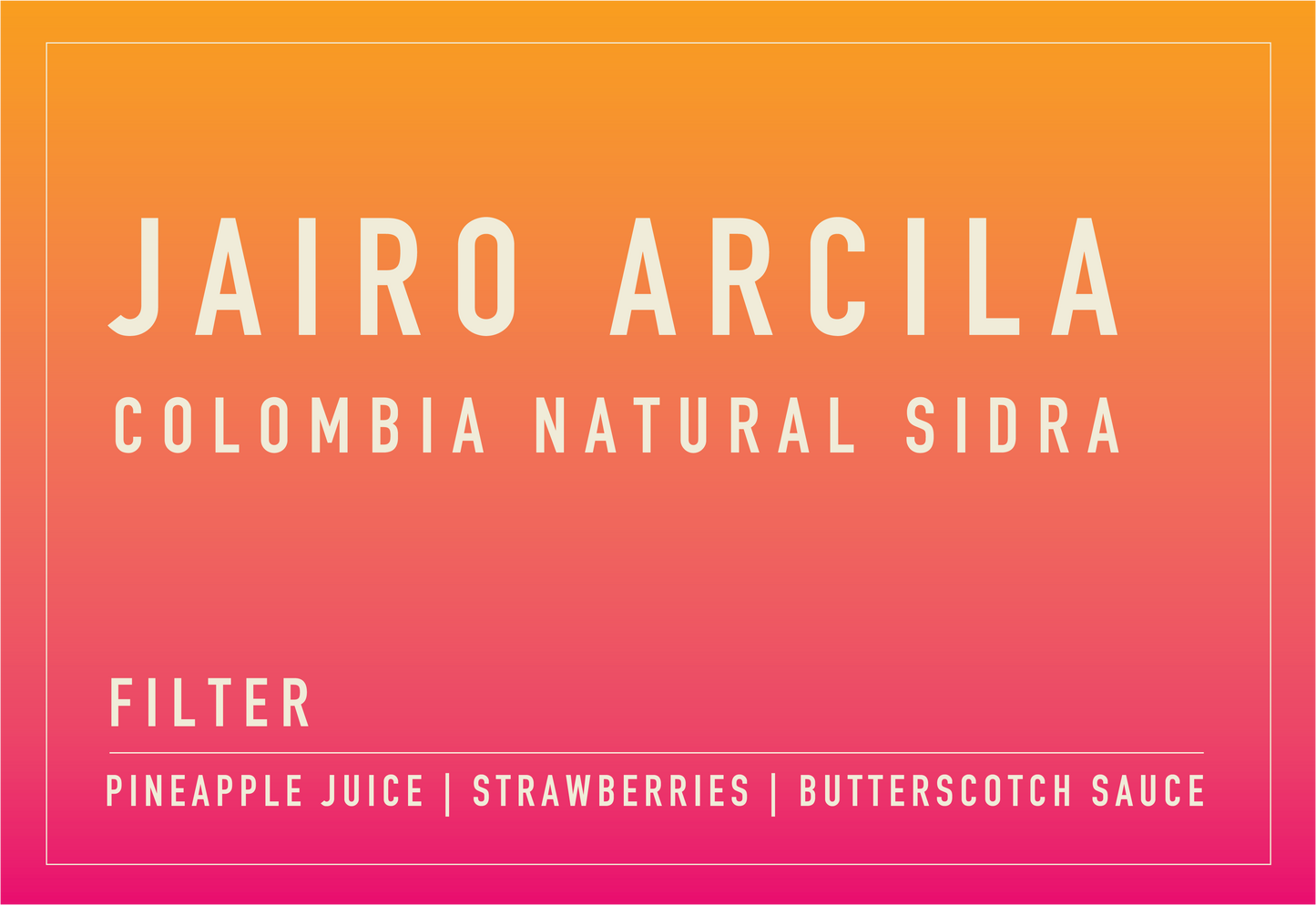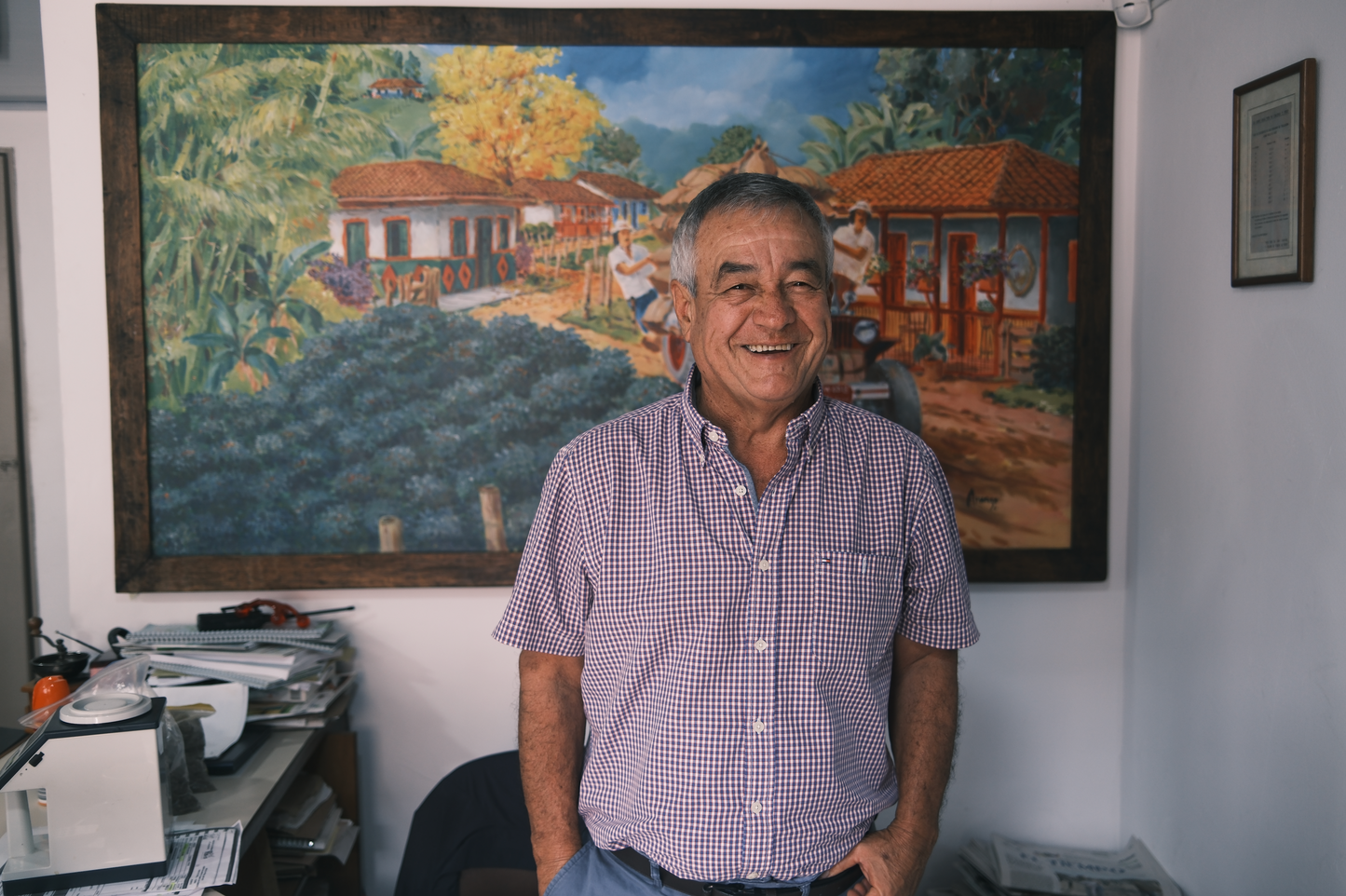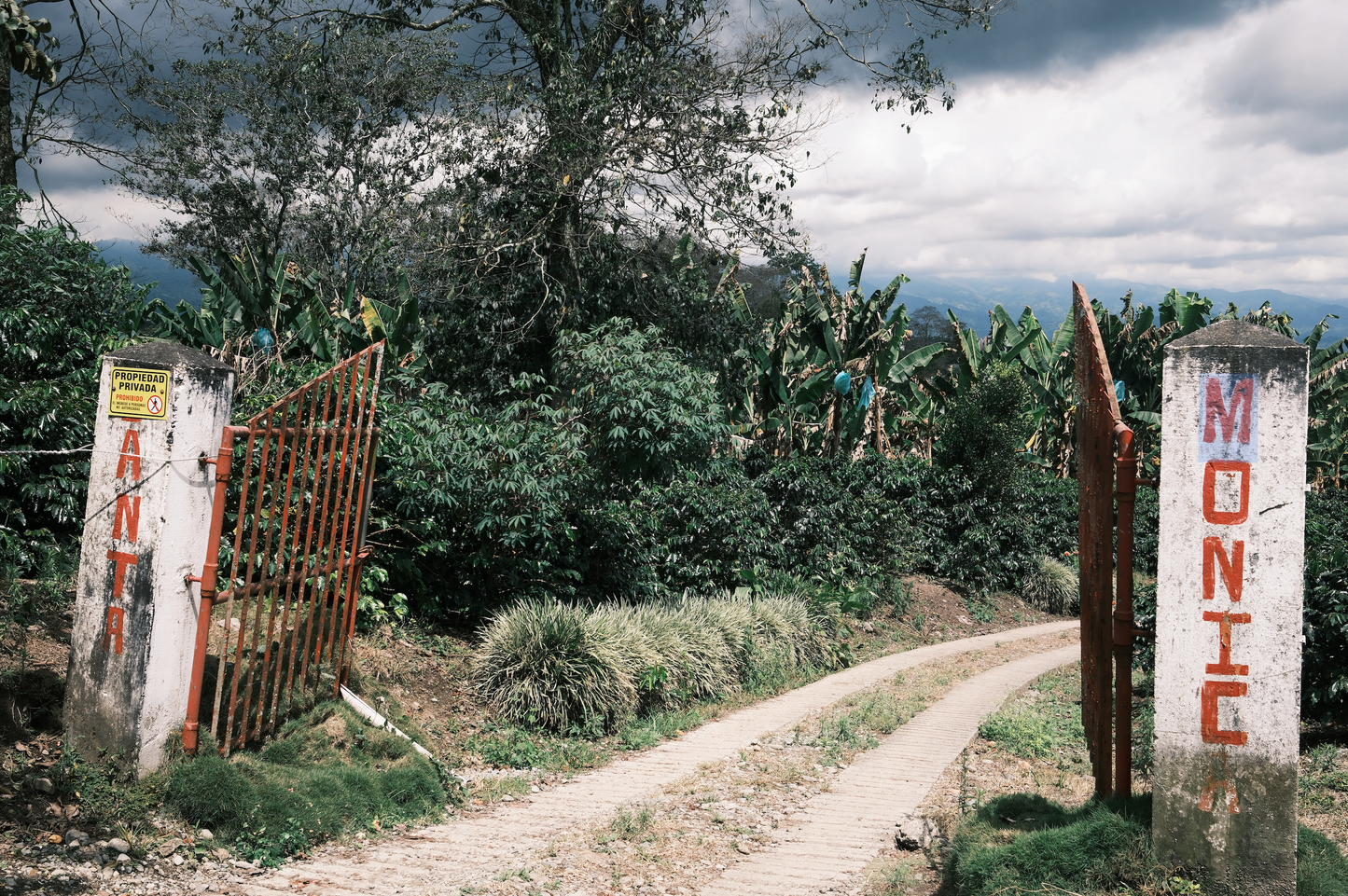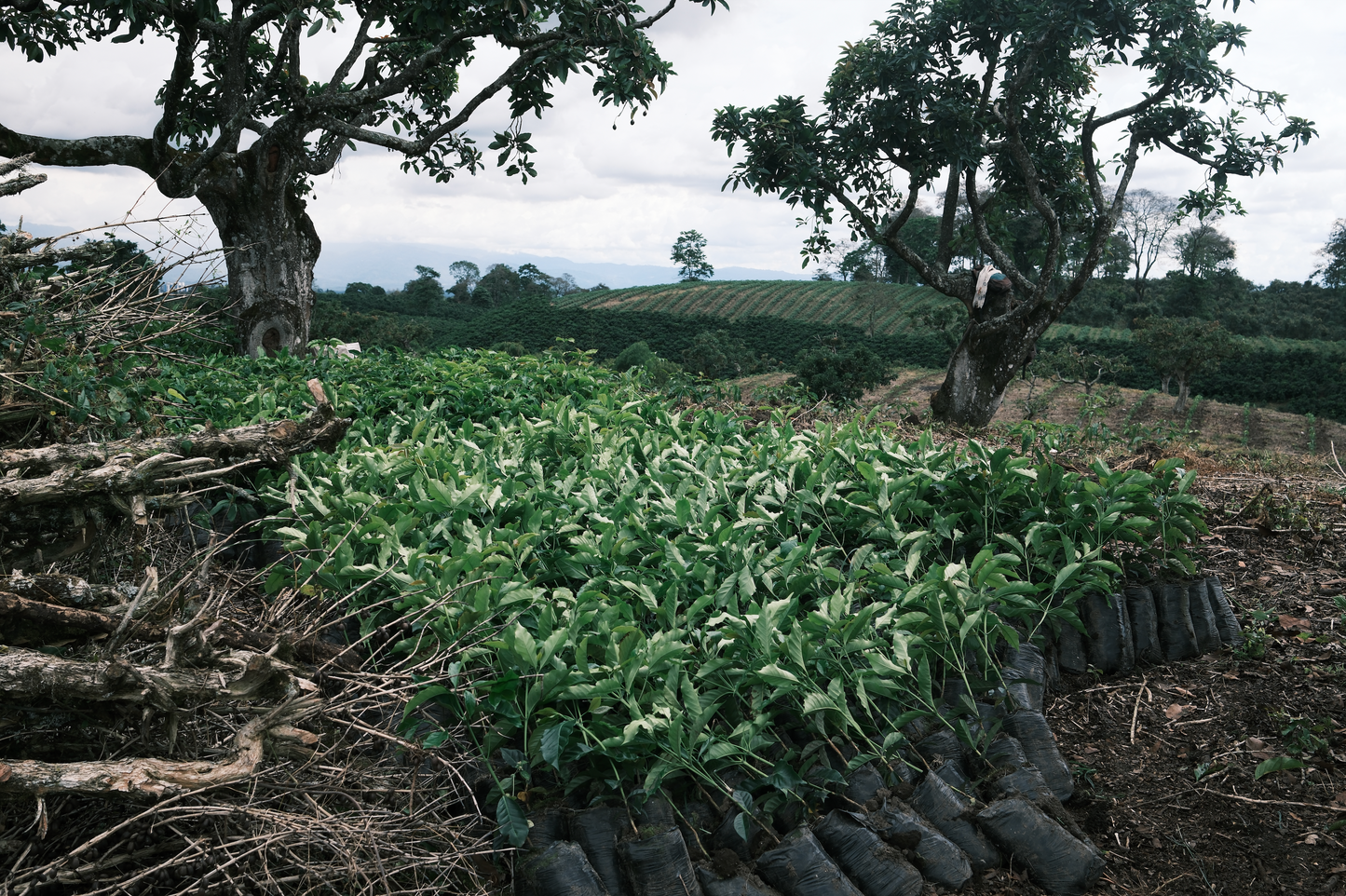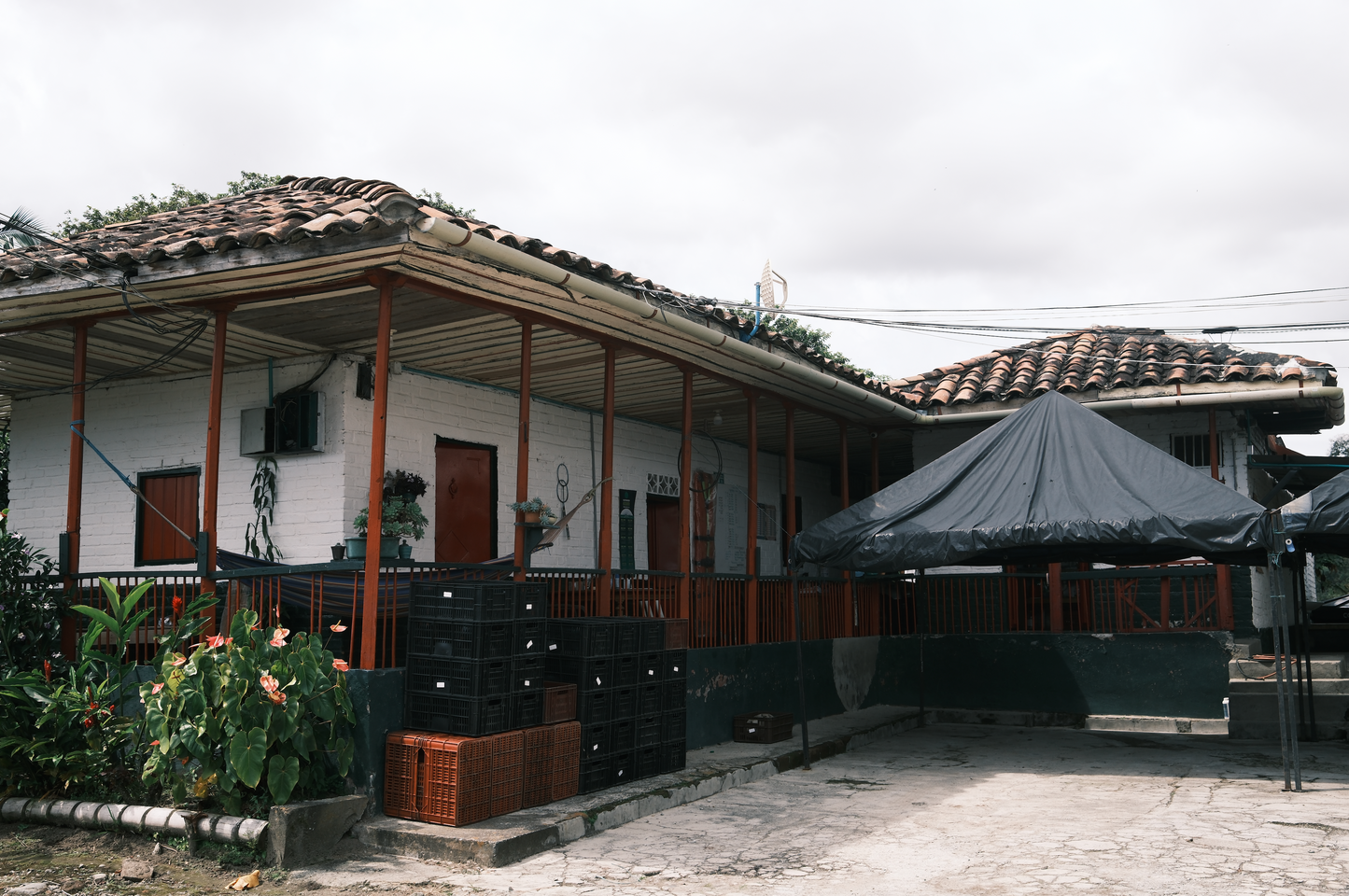CoffeeEmbassy
Jairo Arcila | Natural Sidra
Jairo Arcila | Natural Sidra
Couldn't load pickup availability
Jairo Arcila Natural Sidra
Jairo Arcila is a third-generation coffee grower from Quindío, Colombia, with over 40 years of experience as a Mill Manager. Since purchasing his first farm Finca La Esmeralda in 1987, he’s expanded to six farms. With the guidance of his sons, Carlos and Felipe, co-founders of Cofinet, Jairo has refined his processing techniques and now grows exotic varieties like Gesha and Pink Bourbon, producing exceptional coffees while creating meaningful employment in his local community.
Producer – Jairo Arcila
Location – Armenia, Quindio
Farm – Santa Monica
Variety – Sidra Bourbon
Altitude – 1450 - 1500 masl
Process – Natural
Cupping Notes – Pineapple Juice, Strawberries, Butterscotch Sauce
Roasted For – Filter
Importer – Cofinet
Disclaimer: Notes are based on cupping. Your experience may differ depending on brewing method.
About
Jairo Arcila is a third-generation coffee grower from Quindío, Colombia. He is married to Luz Helena Salazar, and together they have two sons, Carlos and Felipe, who are the co-founders of Cofinet.
Jairo began his career at Colombia’s second-largest coffee exporter, where he worked as Mill Manager for over 40 years until retiring in 2019. In 1987, he purchased his first coffee farm, Finca La Esmeralda, where he planted his first lot of Caturra. Balancing full-time work with farming, he reinvested his earnings to eventually acquire five additional farms: Villarazo, Mazatlán, Santa Monica, Maracay, and Buenos Aires.
During harvest season, Jairo creates employment opportunities for local workers, contributing meaningfully to the local economy.
With the expert guidance of his sons, Jairo has significantly enhanced his coffee production practices, improving picking, sorting, and processing techniques, while also embracing the cultivation of exotic coffee varieties such as Pink Bourbon, Java, Papayo, and Gesha. This collaboration has enabled him to produce exceptional coffees with distinct flavour profiles.
In addition to coffee, Jairo cultivates a range of crops including mandarins, oranges, plantains, and bananas. He values a hearty breakfast to start the day, and above all, he cherishes spending time with his family.
The variety
Understanding the Origins of Sidra
The exact origins of the Sidra variety remain somewhat unclear, though it is widely believed to have originated in Ecuador’s Pichincha province. Some sources suggest that Sidra was developed at a Nestlé coffee breeding facility in the region, where hybrids of Ethiopian and Bourbon varieties were cultivated. Though the facility has since closed, it’s thought that Sidra was one of several unreleased hybrids created during that time.
Don Olger Rogel is often credited with being the first to introduce both Sidra and Typica Mejorada to Ecuador’s coffee sector.
Originally, Sidra was believed to be a cross between Typica and Bourbon, two renowned Arabica varieties. However, genetic testing by farmers and roasters has shown conflicting results. Some tests reveal genetic similarities to Ethiopian heirloom varieties—wild or unidentified landraces native to Ethiopia—while others indicate different parentage altogether.
According to World Coffee Research, Sidra may lack a single, defined genetic identity. Instead, it could represent a group of genetically diverse plants that farmers collectively refer to as “Sidra,” a common occurrence in coffee due to the absence of a formal seed system in many producing countries.
Despite the genetic uncertainty, Sidra is celebrated for its sweet, floral, and fruity cup profile, characteristics often associated with Ethiopian heirloom coffees.
Where is Sidra Grown?
Although genetically linked to Ethiopia, Sidra is primarily cultivated in South America, especially in Ecuador and Colombia. The variety typically thrives at high elevations, growing best between 1,650 and 1,800 metres above sea level.
One of the first farms to grow Sidra commercially was La Palma y El Tucán in Cundinamarca, Colombia. They planted 1,800 Sidra trees in 2012 and expanded with an additional 4,300 plants in 2015, reflecting Sidra’s growing popularity in the specialty coffee world.
In Ecuador, farms like Finca Soledad, owned by José Pepe Jijón in the Imbabura province, have embraced Sidra for its quality and complexity. Jijón notes similarities between Sidra and the renowned Gesha variety, particularly in growth requirements and bean morphology.
Agronomic Characteristics
Sidra plants are tall, reaching up to four metres, with thick trunks, dark green leaves, and elongated five-petal flowers. Their cherries are larger, rounder, and densely clustered along the branches, while the beans themselves are longer and thinner than typical Arabica varieties—visually resembling Gesha.
Like Gesha, Sidra requires shade to grow well, as it is believed to have originated in forested ecosystems. It cannot tolerate full sun exposure.
Sidra is known for its high yield potential and resistance to several pests and diseases, but it remains susceptible to coffee leaf rust (Hemileia vastatrix). This fungal disease inhibits photosynthesis and can spread rapidly. Additionally, Sidra is vulnerable to ceratocystis fimbriata and coffee berry disease, both of which significantly impact plant health and coffee quality.
Filter Recipe
This is a good starting point for all of our Filter coffees. Adjust Accordingly to your own preference.
Ground Coffee: 20g
Brewed Weight: 320g
Contact Time: 3-3:30 mins
Recommended Brewing Age
12+ days after roast date
Share
